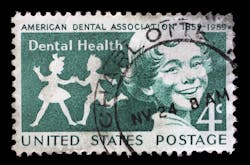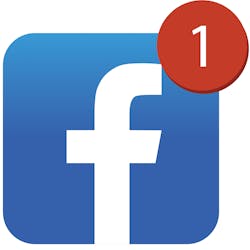Baby boomers and the ‘internet thing’: Marketing dental services to seniors
Nearly a decade ago, I stood in a room of prominent Manhattan clinicians to speak on the topic of dental practice marketing. Specifically, I was presenting on how to maximize and leverage your practice’s digital presence.
We were just starting to talk about incorporating social media and discovering who was online, why they were online, and the phenomenon of this fascinating new version of word of mouth that was slowly emerging. At the end of the presentation, I opened the floor for questions, and a dentist who had seemed impatient and frustrated during the entire presentation raised his hand and gruffly asked, “Do you really think this internet thing is not going away?”
Obviously, I did, and obviously it hasn’t. Many of the dentists I spoke to then are now part of one of the biggest demographics accessible through the internet.
Facebook is old enough to drive, and Grandma is behind the wheel
Facebook has now been around for more than 16 years. It’s an integral part of marketing across all industries, dentistry included. That “internet thing” did not go away in the least. Instead, it became a cornerstone of how people of various ages gather information and recommendations to help them make important choices for themselves and others.
Social media isn’t just for college kids anymore. The youngest millennials are nearly 25 years old, and the oldest are pushing 40. They’ve taught their parents and grandparents how to navigate the online world, and 75% of the baby boomer generation is now on Facebook.1
Whether you’re a pediatric dentist in a small town or a metropolitan fee-for-service restorative specialist who loves providing full-mouth reconstruction to the 65-plus crowd, a target audience in the senior demographic exists on social media.
In the first case, they may be the grandparents of the children you treat, proudly sharing little Johnny’s “No Cavity Club” picture with their friends. In the second case, they may be picking their peers’ brains for advice on which practice caters to anxious patients who have avoided care for some time.
In either case, they’re sharing and gathering information in order to make, or help make, informed decisions about their own or a loved one’s dental care.
Boomers use social media differently than younger generations
While seniors are becoming more social media adept, the way they view, absorb, and trust online content is different. Boomers are much more likely to use Facebook than any of the other platforms. They are also more likely than any younger generations to use it frequently; 96% of boomers with a Facebook account spend time on the platform every day.2
Boomers also interact with user-generated content (UGC) differently than millennials, gen X, or gen Z. While they are increasingly more inclined to trust UGC, they are likely to say the product or service itself is more important to an image’s authenticity than whether or not the image features real people.3
While younger generations are often chastised for their short attention spans, boomers prefer in-depth, informative content over hashtags and hyped up headlines. This preference for comprehensive content that satisfies their desire for self-improvement can be leveraged by dental practices.4 Boomers are more willing to entertain a wide range of content types and can be readily drawn in by a comprehensive blog post, an informative video, or an easily shareable image.
Finally, boomers control a large share of the disposable income, but are also keenly aware of value for price. They must be convinced of the value of the service they’re purchasing, but are less likely to make decisions based solely on cost than are younger generations.5
6 tips for marketing effectively to boomers online
To effectively leverage senior presence on and interest in the online world, dental practices must note the differences in how boomers consume and relate to digital content. Marketing campaigns using social media must be carefully tailored to attract and hold the attention of this demographic.
1. Use the right platforms
As noted, boomers prefer Facebook over Snapchat and Instagram. However, the second most popular platform for seniors is YouTube. They’re more willing to sit through long videos than their younger counterparts, and they embrace serialized content.6 Since YouTube videos can be readily shared on Facebook, this provides a dual opportunity to reach boomers on the two platforms they favor.
Your practice can take advantage of this willingness by creating video series that are informative and educational, walking boomers through the process of dental implantation or explaining why old fillings or bridgework should be replaced. Long-form blog posts are also a good option, and blog series that incorporate video can be created for the best of both worlds.
2. Use the right words
The youngest boomers are only 55, and they don’t appreciate being labeled “old.”7 Many consider themselves to be less than a decade into the second half of their lives, and they want proactive choices, not remedial ones, when it comes to their health. Stay positive and choose your words carefully.
Seniors do not respond well to scare tactics, and they can’t be readily frightened into taking action. Leave dire predictions at the door, along with statistics that have no other purpose than to instill fear. Instead, use logic and solution-based language to acknowledge their challenges and provide answers.
3. Target the right devices
While many seniors are more comfortable with a desktop PC or laptop, more are turning to their mobile devices to access the internet. Making your practice website mobile friendly is a must, as more than two-thirds of boomers own and use a smartphone to search online.8
To take full advantage of seniors clicking through to your website from search or social, your mobile version must be clean, uncluttered, intuitive, and easy-to-read. Targeted landing pages tailored specifically to the content that boomers are seeking will yield the best results. Don’t forget to make your font big enough to read!
4. Make (and keep) the right promises
Boomers believe in building relationships based on trust, in promises made and kept, and in loyalty to their chosen brand or provider.9 By carefully and clearly detailing what you can provide (and then following through), you can nurture and hold up your end of the relationship.
The secret is to be extremely clear and specific. Don’t try to cram your promises into a catchy tagline. Remember, boomers have a long attention span and prefer clarification to buzzwords. Tell them exactly what you are offering and how you will deliver.
5. Focus on the right segment
Less than 30% of American seniors have dental insurance.10 This means they’re more likely to pay out of pocket for their care. The right marketing tactics can draw in boomers who have the means to access high quality health care, which will provide your practice with long-term patients who have a high lifetime value.
Retirees who no longer have access to employer-provided dental insurance still want to be proactive about their care but are no longer concerned about finding an in-network dental practice. However, they are still keenly aware of cost. Offering an in-house dental plan can engender loyalty and provide them with options.
6. Present the right options
Boomers are becoming more technologically savvy each year, and they appreciate efficient options for self-service. Offering these can affect many seniors’ willingness to choose your practice for dental health services.
According to recent studies, nearly 30% of boomers prefer health providers who give them easy access to their medical records and test results online. Almost 20% book appointments online and receive follow-up reminders via text message.11
even if boomers are not your patients, they are influencers Finally, remember that boomers aren’t just seeking information for themselves when they visit social media or search for dental health providers online. They are parents and grandparents, and in some cases directly responsible for making dental care decisions for others under their care.
This means that it’s not just practices that offer typical “senior-centric” services such as dentures and dental implants that should be targeting boomers. The door is wide open for pediatric dental practices, orthodontists focusing on straightening smiles, and other younger-oriented dental practitioners to access this important demographic and influence their decisions for the later generations.
By making baby boomers one of your target demographics and tailoring content just for them, you can tap into their unique approach to seeking dental care. By leveraging their attention spans, desire for comprehensive information, and loyalty to those they perceive as trustworthy and authoritative, your dental practice can capture a share of their impressive spending power.
Regardless of your patient demographics, build one of your next marketing campaigns around boomers. They may be outnumbered by millennials, but they’re still a force to be reckoned with.
References
1. Kenshoo. 5 things to know when marketing to baby boomers. Kenshoo website. https://kenshoo.com/blog/baby-boomers/. Published May 16, 2019. Accessed January 2, 2020.
2. Cox T. How different generations use social media. The Manifest website. https://themanifest.com/social-media/how-different-generations-use-social-media. Published July 2, 2019. Accessed January 2, 2020.
3. Kilroy D. How to use user-generated content to capture customers. Shortstack website. https://www.shortstack.com/blog/how-to-use-user-generated-content-to-capture-customers-infographic/. Published January 5, 2017. Accessed January 2, 2020.
4. Brenner M. A guide to content marketing by generation. Marketing Insider Group website. https://marketinginsidergroup.com/content-marketing/a-guide-to-content-marketing-by-generation/. Published July 2, 2019. Accessed January 2, 2020.
5. Why your marketing isn’t resonating with baby boomers. Coming of Age website. https://www.comingofage.com/blog/why-your-marketing-isnt-resonating-with-baby-boomers/. Published April 24, 2019. Accessed January 2, 2020.
6. James D. Marketing healthcare services to baby boomers. Everything PR website. https://everything-pr.com/marketing-healthcare-services-to-baby-boomers/. Published November 19, 2018. Accessed January 2, 2020.
7. Marketing to baby boomers. Strategy Driven Marketing website. https://www.strategydrivenmarketing.com/news/2019/7/1/marketing-to-baby-boomers. Published July 1, 2019. Accessed January 2, 2020.
8. Balkhi S. 7 tips for marketing your content to baby boomers (and why you should). Entrepreneur website. https://www.entrepreneur.com/article/304729. Published December 15, 2017. Accessed January 2, 2020.
9. Ragovin H. For most seniors, oral health goes uncovered. Tufts Now website. https://now.tufts.edu/articles/most-seniors-oral-health-goes-uncovered. Published July 8, 2019. Accessed January 2, 2020.
10. Starr R. 10 most well-guarded secrets about marketing to baby boomers. Small Business Trends website. https://smallbiztrends.com/2019/03/how-to-market-to-baby-boomers.html. Published March 13, 2019. Accessed January 2, 2020.
11. Mikulic M. Percentage of US baby boomers that would choose a doctor with digital health options. Statista website. https://www.statista.com/statistics/989789/baby-boomers-that-would-choose-a-doctor-with-digital-health-options/. Published April 5, 2019. Accessed January 2, 2020.
KRISTIE NATION is the founder and CEO of myDentalCMO, a marketing consulting firm that provides strategic marketing “treatment plans” exclusively for dental practices. The firm was founded with a mission to prevent dentists from wasting countless dollars marketing their practices ineffectively. She can be reached at [email protected] or (877) 746-4410.
About the Author

Kristie Boltz
Founder and CEO, myDentalCMO
Kristie Boltz is the founder and CEO of myDentalCMO, a marketing consulting firm that helps dentists make smarter marketing decisions and trains dental teams to execute on those decisions. As a result of her head for numbers and passion for teaching, people often say their practice marketing dollar has never been more effective. Schedule a chat with Kristie at mydentalcmo.com or call (877) 746-4410.
Updated February 2021


